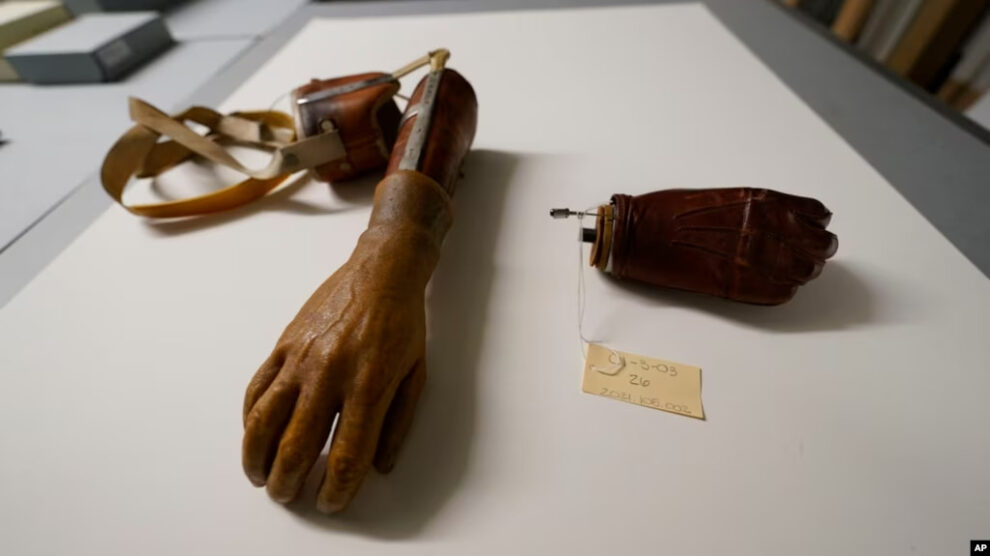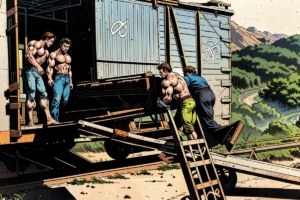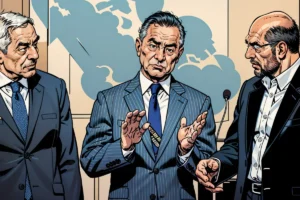A new, permanent addition to the sprawling National WWII Museum in New Orleans is a three-story complex with displays as daunting as a simulated Nazi concentration camp bunk room, and as inspiring as a violin pieced together from scrap wood by an American prisoner of war.
The Liberation Pavilion, which opened Friday, is ambitious in scope. Its exhibits filling 3,065.80 square meters commemorate the end of the war’s death and destruction, emphasize its human costs and capture the horror of those who discovered the aftermath of Nazi atrocities. Films, photos and recorded oral histories recount the joys and challenges awaiting those who returned from battle, the international effort to seek justice for those killed and tortured, and a worldwide effort to recover and rebuild.
Underlying it all is the idea that almost 80 years later, the war’s social and geopolitical legacies endure — from the acceleration of civil rights and women’s equality movements in the U.S. to the formation of international alliances to protect democracy.
“We live in a world created by World War II,” Rob Citino, the museum’s Samuel Zemurray Stone Senior Historian. said when asked what he wants the pavilion’s visitors to remember.
It’s a grim tour at first. Visitors entering the complex pass a shimmering wall of military dog tags, each imprinted with the name of an American killed in action, a tribute to the more than 414,000 American war dead. The first centerpiece exhibit is a large crate used to ferry the coffin of an Army private home to his family in Ohio.
Steps away is a recreation of the secret rooms where Anne Frank and her family hid from the Nazis in Amsterdam. Then, a dimly lit room of wooden bunks and life-size projected images of the emaciated survivors of a Nazi concentration camp. Nearby is a simulated salt mine, its craggy walls lined with images of centuries-old paintings and crates of statuary — representing works of art plundered by the Germans and recovered after the war.
Amid the bleakness of the pavilion’s first floor are smaller and more hope-inspiring items, including a violin constructed by an American prisoner of war. Air Force 1st Lt. Clair Cline, a woodworker, used wood scavenged with the help of fellow prisoners to assemble the violin as a way of fighting the tedium of internment.
“He used bed slats and table legs. He scraped glue from the bottom of bits of furniture around the camp,” said Kimberly Guise, a senior curator at the museum.
The pavilion’s second floor focuses in part on what those who served faced upon returning home — “the responsibilities at home and abroad to defend freedom, advance human rights, protect democracy,” said Michael Bell, a retired Army colonel and the executive director of the museum’s Institute for the Study of War and Democracy.
Black veterans came back to a homeland still marred by segregation and even violence against people of color. Women had filled non-traditional roles at home and abroad. Pavilion exhibits make the case that their experiences energized efforts to achieve equality.
“Civil rights is the ’50s and women’s equality is more more like the ’60s,” Citino said. “But we think both of those seminal changes in American society can be traced back in a significant way to World War II.”
Other second-level exhibits include looks at the Nuremberg war crimes trials, the post-war emergence of the United States as a world superpower and the formation of international alliances meant to sustain peace and guard against the emergence of other worldwide threats to freedom.
Source : VOA News















